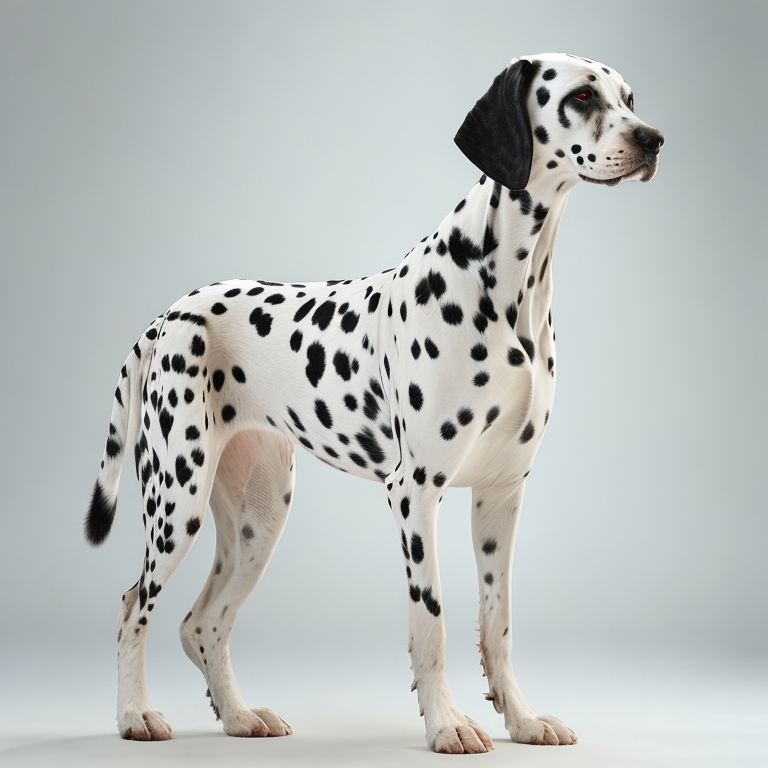Have you ever wondered why Dalmatians possess the iconic spotty coat? This eye-catching pattern is not only aesthetically pleasing, but also a defining feature of the breed that goes back generations. It’s also an incredibly unique trait, as no other breed of dog has similar markings. But what is the root of this undeniable characteristic? To explore this question, we must first look at the history of the Dalmatian. This breed originated in Croatia back in the 18th century, although their exact origins are unknown. They were initially used as guard dogs as well as for hunting and hauling carts. Over time, they made their way to Europe and eventually the United States in the 19th century, where they rose to popularity for use as carriage dogs. Today, the Dalmatian remains one of the most recognizable breeds. It’s not just because of their spots – they are also incredibly intelligent, friendly, and loyal companions. So why do dalmatians have spots? Well, the answer lies in the genetics of the breed. According to research, the pattern of spots is a simple dominant gene, meaning that a Dalmatian puppy will most likely inherit the markings if even one parent is spotted. Additionally, the environment in which the dog is raised can also affect the color and size of the spots. As you can see, the spots on a Dalmatian are a fascinating testament to the breed’s history and unique genetics. In the following blog post, we’ll take an even closer look into why Dalmatians have spots. We’ll explore the genetics of the breed, its impact on the Dalmatian’s history, and more. Let’s jump in and uncover the mystery of the iconic spots!

Origins of the Dalmatian Breed
The Dalmatian breed has a long and interesting history, but the exact origin of the breed is still a bit of a mystery. It is believed that they originated in Croatia in the 18th century, where they were primarily used as guard, hunting, and cart-pulling dogs. From there, they spread to Europe and eventually the United States in the 19th century. The spots of the Dalmatian have often been assumed to be a trait that originated in the process of human breeding, but this is most likely not the case. Instead, current research suggests that the spotted coat is a simple dominant gene. This means that if even one parent is spotted, then they will likely pass the trait down to their offspring. The environment in which a Dalmatian is raised can also affect the size and color of their spots. This is why some of the breed may possess larger spots of different hues, while others have smaller and lighter spots. In short, the unique pattern of spots is a fascinating genetic mystery that is still being explored today.
Dalmatian Spots Explained
So why do dalmatians have spots? As mentioned previously, it is believed to be the result of a simple dominant gene. This gene is responsible for the breed’s unique patterned coat, which can range from small, round spots to larger irregular ones. It is also the same gene that gives the Dalmatian their solid white base coat.The exact origin of the gene is unknown; however, researchers have been able to determine that the dominant gene is responsible for the spotted coat. This means that it is more likely for a Dalmatian to have the trait if even one of their parents is spotted. Additionally, the environment in which the pup is raised can also affect the color and size of their spots. The spotted coat of the Dalmatian is a unique and defining trait of the breed. It is also what sets them apart from other breeds of dogs, as no other breed has similar markings.
Purpose of Spots
The exact purposes of the spots on a Dalmatian are unknown, but scientists believe that they may have evolved as a way to camouflage the breed. This means that the spots could blend in with the environment, making them easier to hide from predators.The spots could also have been an adaptation to ensure better survival in the harsh conditions of their native environment. It is also possible that the patterned coat may be an evolutionary trait meant to attract potential mates, although this is still largely speculation. Regardless of the actual purpose, the spots of the Dalmatian have become a defining feature of the breed. They are what separate the Dalmatian from all other breeds and make them so unique and recognizable.
Color Variations
The spots of a Dalmatian can come in various colors, sizes, and shapes. According to the American Kennel Club (AKC) standard, the spots should be black or liver-colored. However, some Dalmatians may possess spots of other colors, such as tan, brown, or even white. The size of the spots can also vary from small, round dots to larger, irregular shapes. Additionally, the pattern of spots may be broken up in certain areas, such as the face or legs. All of these color and pattern variations are considered to be within the breed standard, so long as the base coat remains white.
Health Concerns of Spotted Dalmatians
The spotted coat of a Dalmatian can be susceptible to certain health concerns. One of the most common is called “liver dotting,” which is when the spots of the Dalmatian are predominantly liver-colored instead of black. This condition is usually harmless, but in rare cases it can indicate underlying health issues.Additionally, the spots of the Dalmatian may also be prone to fading or changing in color as the pup matures. This is normal and does not usually indicate any health issues. However, if the fading is severe or if the spots start to become patchy, then it may be a sign of a medical problem.In short, the spots of a Dalmatian can be a potential sign of underlying health concerns, but in most cases they are harmless and not a cause for concern. To ensure that your Dalmatian is healthy, it is important to schedule regular check-ups with your veterinarian.
Conclusion
The iconic spotted coat of the Dalmatian is a unique and defining trait of the breed. It is believed to be the result of a simple dominant gene, meaning that it is more likely for a Dalmatian puppy to have the spots if even one parent is spotted. Additionally, the environment in which the pup is raised can also affect the color and size of their spots. The spots may also have evolved as a way to camouflage the breed or as an evolutionary trait meant to attract potential mates. They can come in various colors, sizes, and shapes, and in some cases, they may be a sign of underlying health issues. Overall, the spots of the Dalmatian are a fascinating testament to the breed’s history and genetics. They are what make the Dalmatian so recognizable and unique, and it is no wonder why they remain one of the most popular breeds today.
Citations:
 wagwagtail "only love can make your dog wag her tail"
wagwagtail "only love can make your dog wag her tail"
